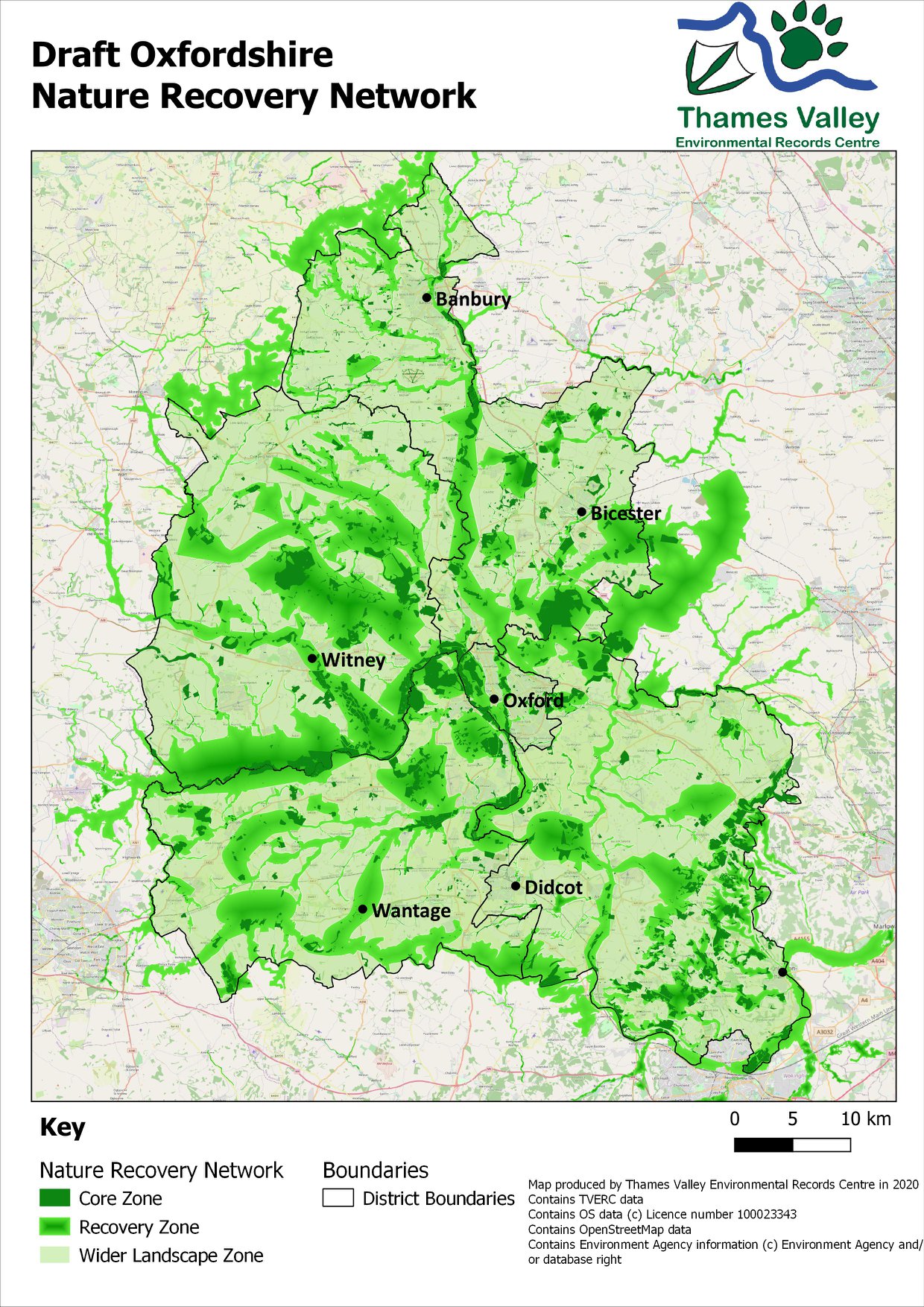The overarching ambition of DEFRA’s 25 Year Environment Plan is to ‘leave our environment in a better state than we found it and to pass on to the next generation a natural environment protected and enhanced for the future’. The plan highlights six key areas for action, one being to establish a Nature Recovery Network. This will protect and restore wildlife, as well as providing greater public enjoyment of the countryside; increased carbon capture; and improvements in water quality and flood management.
In the Environment Bill, government will introduce new duties to support better spatial planning for nature through the creation of Local Nature Recovery Strategies (LNRSs). The intention is that the whole of England will be covered by LNRSs. Each will include a statement of biodiversity priorities for the area covered by the strategy and a local habitat map that identifies opportunities for recovering or enhancing biodiversity.The natural world is the foundation of our wellbeing and prosperity, and provides an irreplaceable stock of natural capital but nature has declined significantly in recent times and continues to decline. For nature to recover we have to look beyond currently protected sites and take action to extend and link our existing sites – both to support wildlife and to recover the range of economic and social benefits that nature provides. The aim should be to make existing patches of habitat bigger and better, increase the number of valuable habitat patches, improve connectivity, and restore natural processes.

'Nature is declining globally at rates unprecedented in human history' Intergovernmental Science-Policy Platform on Biodiversity and Ecosystem Services (IPBES) Global Assessment 2019
'There has been no let-up in the net loss of nature in the UK' Hayhow et al, State of Nature 2019, The State of Nature Partnership
'There is a continued fragmentation and loss of connectivity across the county's landscapes, affecting the future viability of habitats and species' State of Nature Oxfordshire 2017. Wild Oxfordshire.
To achieve nature’s recovery, Oxfordshire needs large areas where wildlife is able to flourish and where nature provides the range of ecosystem services we will need in the future. Our ambition should be to double the amount of land of high value for nature by 2050.
As well as having a primary role of supporting abundant wildlife, a Nature Recovery Network should enhance natural beauty, conserve geodiversity and provide opportunities to deliver benefits for people, such as flood alleviation, recreation and climate change adaptation.
Oxfordshire already has the foundations for a local Nature Recovery Network. Since 2006, the Conservation Target Areas have been established as the spatial component of Oxfordshire’s strategic approach to biodiversity. They are concentrations of priority habitats and species and include surrounding land that can buffer and link these habitats and provide opportunities to create new sites.
The development of a draft network map has been carried out collaboratively by a partnership of local nature conservation organisations, led by Thames Valley Environmental Records Centre (TVERC), Wild Oxfordshire and The Berks, Bucks and Oxon Wildlife Trust (BBOWT) and overseen by Oxfordshire’s Biodiversity Advisory Group (BAG) and adopted by the Oxfordshire Environment Board (OxEB). Extensive consultation with a wide group of stakeholders has ensured that the map has been scrutinised by the wider environmental community in Oxfordshire.

Core Zone – the most important sites for biodiversity in Oxfordshire – including all nationally and locally designated sites, nature reserves, priority habitats and ancient woodland.
Recovery Zone – comprising the Conservation Target Areas, Important Freshwater Areas and additional areas added to provide better habitat connectivity.
Wider Landscape Zone – covering the rest of the county, recognising the important contribution that agricultural and urban landscapes beyond the Recovery zone can make to nature’s recovery

A wide range of data and a variety of analytical approaches were used by TVERC to identify the draft NRN for Oxfordshire. The data and methods are described in the Technical Report.
1) Develop a Nature Recovery Strategy
2) Make Strategic land use decisions that help nature's recovery
3) Target activity to generate the best outcomes for wildlife
4) Target investment into restoring the natural environment
Future local development plans will need to consider in detail how to plan for more nature. Oxfordshire’s Biodiversity Advisory Group has proposed a number of policies for Oxfordshire's Local Authorites' updated and emerging policy documents. These include: